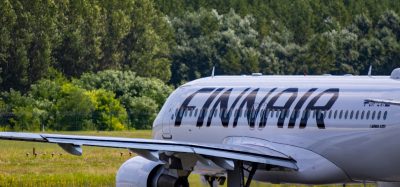Landmark synthetic jet fuel specification action creates opportunities for airports
Posted: 16 July 2009 | Richard L. Altmanm, Executive Director, Commercial Aviation Alternative Fuels Initiative (CAAFI) | No comments yet
In the Nov 07’ issue, International Airport Review readers were introduced to the Commercial Aviation Alternative Fuels Initiative (CAAFI). CAAFI’s genesis, its structure and its accomplishments were listed. Readers were left with the question “Will aviation be the last to wean itself from petroleum fuel or will it be a “first mover” to a very different future?”
In the Nov 07’ issue, International Airport Review readers were introduced to the Commercial Aviation Alternative Fuels Initiative (CAAFI). CAAFI’s genesis, its structure and its accomplishments were listed. Readers were left with the question “Will aviation be the last to wean itself from petroleum fuel or will it be a “first mover” to a very different future?”
That question was answered for the most part on June 24, 2009. During meetings held in Norfolk, Virginia, the Aviation Fuel Subcommittee of the ASTM (American Society of Testing and Materials International), the fuel specification governing body, passed a new specification framework for alternative fuels that can be used in applications calling for certified D1655 Jet A petroleum-derived fuel. Certification action is limited to fuel types that will “drop-in” or be indistinguishable from Jet A fuel when used in existing aircraft engines.
This action, for the first time, opens jet fuel production to multiple sources, including a broad array of feedstock’s, production facilities, and locations. By contrast, approvals granted prior to this action were limited to experimental use (flight test programmes) and production from one specific coal-to-liquid production facility located in South Africa.
At the June 24 meeting, after a review of comments to the draft specification, the Aviation Fuels Subcommittee voted to approve the specification and to proceed with a ballot to the top-level Petroleum Products and Lubricants Committee of ASTM International within the next two weeks. With success expected in that committee-level ballot round, it is anticipated that the specification will be issued with its official ASTM International numerical designation by this autumn, perhaps even as early as September.
The new fuel specification, labeled DXXXX until finalised by the Petroleum Products and Lubricants Committee of ASTM, initially will enable the use of up to 50/50 blends of Jet A fuels and approved alternative fuels derived from natural gas, biomass, and coal (through the Fischer Tropsch process). Each new fuel process that is approved will be described in an appendix to the new DXXXX specification framework.
Synthetic paraffinic kerosene (SPK) fuels derived from seed-bearing oils from Jatropha, Camelina, and other feedstock’s identified by the subcommittee as hydrotreated renewable jet (HRJ) fuel (similar to what was flown on three Boeing flight tests in December and January) are strong candidates to be added to the initial approvals by the end of next year. That outcome is contingent upon the results of an ASTM research report, expected later this year, examining “fit for purpose” characteristics of those fuels. FFP characteristics address issues such as lubricity (measure of fuel system wear), thermal capacity (measure of ability to act as a heat sink) and other key characteristics that ensure full “form, fit and function” interchangeability with D1655 certified Jet A. Approval will also take into account recently released outcomes of Boeing’s test flight programmes, where such issues as altitude relight were tested and found to be acceptable.
With Airworthiness approved by ASTM, commercial aviation’s focus will centre on the acceptance of norms for carbon life cycle environmental analysis and issues of economical deployment of the new fuels.
In the case of carbon life cycle analysis, a set of “rules and tools”, that enables “ground to wheel” life cycle analysis, have been proposed by a joint U.S. Department of Energy and U.S. Air Force task force, in consultation with the U.S. Environmental Protection Agency. This proposal is currently under peer review. Air Force /DOE action was necessitated by the Department of Energy Budget Authorisation Act of 2007 in the United States. Under the law, government purchasers of a new liquid fuel type are required to prove that the acquisition of an alternative to petroleum based fuel is lower in CO2 output than fuels that come from traditional oil refineries. While not a government purchaser, policies adopted by CAAFI’s airline sponsor, the Air Transport Association of America (ATA), must meet the same requirement. ATA represents 90 percent of all North American airlines.
Globally a European Initiative called SWAFEA (Sustainable Way for Alternative Fuels and Energy for Aviation) began this year, as did efforts of the United Nations’ ICAO (International Civil Aviation Organization) environmental arm that will represent Aviation perspectives at the global climate change sessions in Copenhagen in December.
Coupled with the CAAFI analysis, European and ICAO efforts, the global aviation sector is poised to provide candidate producers with a single Carbon life cycle assessment framework to assess the compatibility of facility plans with a carbon constrained future.
Together, the actions on certification and carbon life cycle analysis are prompting an ever-expanding dialogue with some forty-five strong energy suppliers who are CAAFI stakeholders. Links to many of these candidate energy suppliers can be found on CAAFI’s public Web site www.caafi.org.
CAAFI’s business and Economics team is organising to bring specific project candidates to the attention of airline buyers, investors, and a myriad of federal- and state-funded programmes. All of these efforts should help to jump-start the now budding alternative aviation fuels industry.
To ensure that deployment will occur with aviation leading the way, CAAFI is now seeking to ensure that a significant number of jet fuel facilities (at least 10) are in place in the U.S. over the next five years. Ideally supply can be achieved in proximity to airports, having identified needs for an added supply of sustainable fuel through nearby domestic feedstock’s. In this manner, a favourable cost (leveraging simplified airport fuel distribution) vs. dispersed distribution to many supply locations for ground transport can be leveraged and supply availability assured. It is believed that, with an adequate number of success models, a larger group of investors will enter the aviation market.
Summing up the sentiments of candidate buyers for aviation alternative fuels, in view of the certification action, and in consideration of actions occurring on environmental and deployment fronts, Nancy Young, Vice President of Environmental Affairs for the ATA, characterised the certification outcome as “extremely positive.” She says, “This is a giant step toward adoption of the first of what promises to be several generic alternative jet fuel blends, that will offer commercial aviation a sustainable new fuel dynamic. The airline industry is prepared to be an enthusiastic buyer.”
Actions Airports Can Take Now
In view of the landmark certification action, as well as carbon benefit quantification and deployment activities, how can airports ensure that they can benefit?
It is suggested that an airport operator, in concert with the airlines that serve it, ask themselves a few fundamental questions.
- Has our Airport experienced fuel price and availability swings beyond industry norms over the last two to three years?
- Does our airport have potential supplies of the feedstocks described above within easily transportable distances?
- Does our airport anticipate upcoming growth and if so, do we have either carbon footprint and/or potential local air quality constraints that would limit or delay growth?
If these three answers are yes, please contact CAAFI via our website www.caafi.org. You are welcome join aviation’s march toward the creation of a new, sustainable fuel dynamic.
New report from International Airport Review: Securing Airports in an Evolving Threat Landscape
International Airport Review has brought together top voices from across the global aviation security sector, including International Civil Aviation Organization (ICAO), ACI World, Fraport, Qatar Civil Aviation Authority, Winnipeg Airports Authority, and Smiths Detection to examine today’s most pressing airport security challenges and emerging threats.
This expert-led report provides a strategic assessment of the vulnerabilities facing airports in 2025, encompassing cyber-attacks, drone incursions, evolving geopolitical risks, and emerging technologies.
The result is a practical, insightful guide to strengthening airport resilience, anticipating risks before they escalate, and keeping your airport off the front page
Download the report for free and stay ahead of the security curve – READ FOR FREE NOW!

















